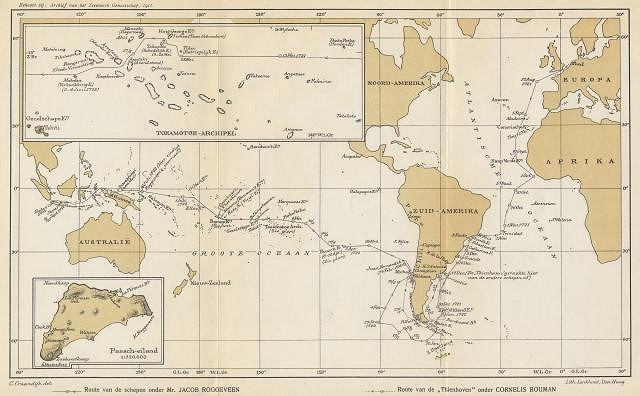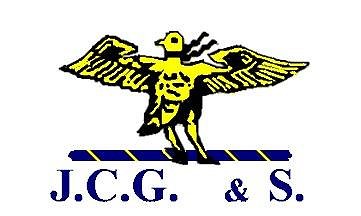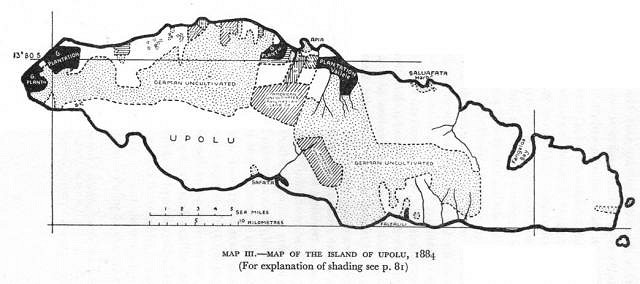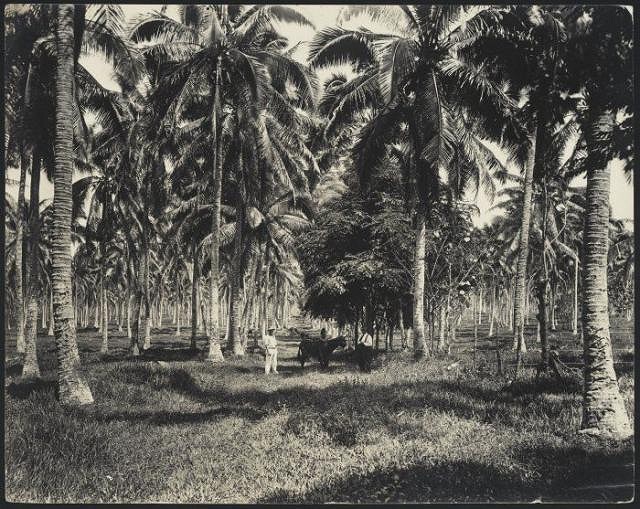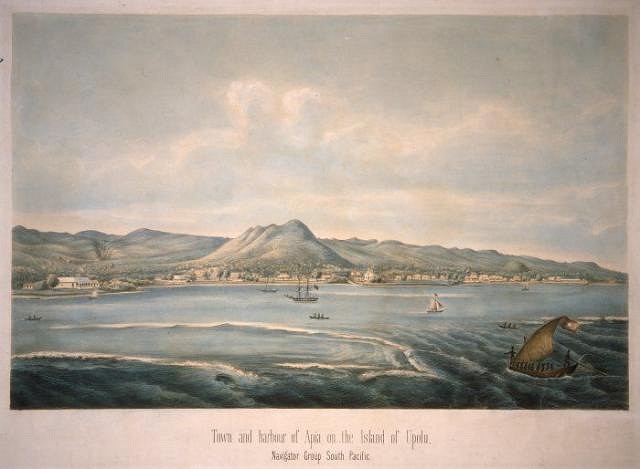Tiki Central / Tiki Drinks and Food / The real Dr. Funk
Post #628014 by TikiTomD on Wed, Mar 7, 2012 6:03 PM
|
T

TikiTomD
Posted
posted
on
Wed, Mar 7, 2012 6:03 PM
Pausing Dr. Funk’s story briefly for some geographic and historic context before his arrival in Samoa... 1896 map of the Samoan Islands by George Cram The Samoan Islands are south of the equator, between Hawai The islands in the map center and right comprise Eastern Samoa, principally Tutuila and the Manu`a Islands, now known as American Samoa, an unincorporated territory of the US. Pago Pago on Tutuila is the capital village, though the official seat of government is in Fagatogo village. The first recorded European contact with Samoa occurred on June 13, 1722 when Commodore Jacob Roggeveen of the Dutch West India Company, on an exploration mission to find Terra Australis, arrived within sight of Ta According to Captain J.A.C. Gray, USN, in his 1960 American naval history of Samoa, Amerika Samoa, Roggeveen next sailed into the bay between Ofu and Olosega. The High Chief of Ofu attempted to lure the visitors onto shore in order to fulfill custom: one of their representatives would be required to fight a warclub duel with the local champion to determine their fitness to land. Seeing warriors on the shore, the visitors wisely chose not to land the small boat they had dispatched from the ships. The High Chief set out in his war canoe to meet them, taking along his ceremonially clad village virgin. After a brief but not unfriendly encounter in the bay, Roggeveen sailed on. Though he never sighted the Australian continent of his quest, Roggeveen discovered, in addition to Samoa, Easter Island (Rapa Nui) on April 5, 1722 (Easter Sunday). Map showing route of Roggeveen’s expedition The next recorded contact came in 1768 when French explorer, Louis-Antoine de Bougainville, appeared off Eastern Samoa and bartered trinkets for fresh fruit with the inhabitants of Ofu and Olosega. Admiring the way the native Samoans handled their canoes, he called their home “Les Iles des Navigateurs,” by which name, or its English equivalent, “The Navigator Islands,” they were long known. ** From Bougainville’s A Voyage Round the World * (Dublin, 1772)* On December 10, 1787, the crews of two ships under command of the French naval officer, Jean François de Galaup, comte de Lapérouse, landed on Tutuila in Eastern Samoa to refill the ships’ casks with fresh water. A friendly reception was marred by only one incident, when a Samoan jumped into one of the landing boats in an attempt to make off with an iron spike. Lapérouse had the man seized, chastised and released. Unfortunately, the punished Samoan was among a group of warriors from Upolu who were visiting the subordinate Tutuilans to exact a periodic ceremonial tribute. The next day, when a shore crew returned to finish replenishing their water casks, they were attacked by vengeful Upoluan warriors, killing twelve of them, including a ship’s captain. When Captain Edwards of HMS Pandora showed up just four years later, sent by the British Admiralty to find Christian Fletcher and his band of merry mutineers from the HMS Bounty, the Samoans were not in a welcoming mood. Upoluan warriors attacked from outrigger canoes at night, with loss of life on both sides. Fairly or not, the Samoans were getting a reputation as Polynesians with an “attitude.” The Pandora brought to a close the 18th century European encounters. Starting in the 19th century, native Samoans could no longer count on enjoying their cocktail hour without interruption from uninvited Europeans. The Samoans just had no luck at all, as next to arrive were representatives of the London Missionary Society, not known for being sociable drinkers. The Samoan cocktail was, of course, that most authentic of Polynesian intoxicants, kava... Andrew, Thomas, 1855-1939 : Kava making, Samoa, [189?] Appearing on the scene in 1830 was the Reverend John Williams, who arrived with Charles Barff of the London Missionary Society to introduce Christianity to the Samoans. This is the same Reverend Williams who explored the Cook Islands and much of the South Pacific, discussed in this Tiki Central post. You can also read there about his final rendezvous in 1839 with some truly pissed-off cannibals in the New Hebrides. As noted earlier in this thread, the Hamburg merchant venture firm, J.C. Godeffroy & Son, determined that they could make lots of money in the coconut oil and copra trade in the South Pacific, so the firm sent August Unshelm to the Pacific in 1854 on a mission to locate and secure an accessible port in a centralized location to serve as the firm’s regional headquarters. According to Silvia Masterman’s 1934 book, The Origins of International Rivalry in Samoa: 1845-1884, Unshelm first visited Apia, Samoa in May of 1854. In 1856 he came for a second time, and strongly recommended it as a commercial center. By 1857, the firm was established there. In 1864, Unshelm drowned at sea, so Theodore Weber, his 21-year old assistant, took over and proved to be an even more capable executive. He established permanent coconut plantations on the best land available. According to Captain J.A.C. Gray’s Amerika Samoa, the plantations were splendid affairs with the coconut palms set in orderly rows at precisely the intervals calculated for maximum yield. They had German overseers and used indentured labor. The native Samoans regarded regular work for wages as sheer lunacy, so they continued to enjoy the good life as they knew it outside the plantations, while amazed and amused at what went on inside them. House Flag of J.C. Godeffroy und Sohn Map of Upolu in 1884 showing German Plantation Locations Here’s an antique photo of one of the original German coconut plantations on Samoa; that plantation survives to this day and is claimed to be the largest in the Southern Hemisphere... View of Mulifanua coconut palm plantation, Samoa, [ca1905] ** [Artist unknown]: Town and harbour of Apia on the Island of Upolu, Navigator Group, South Pacific [ca 1867] Next, Samoa calls for a doctor... -Tom |


